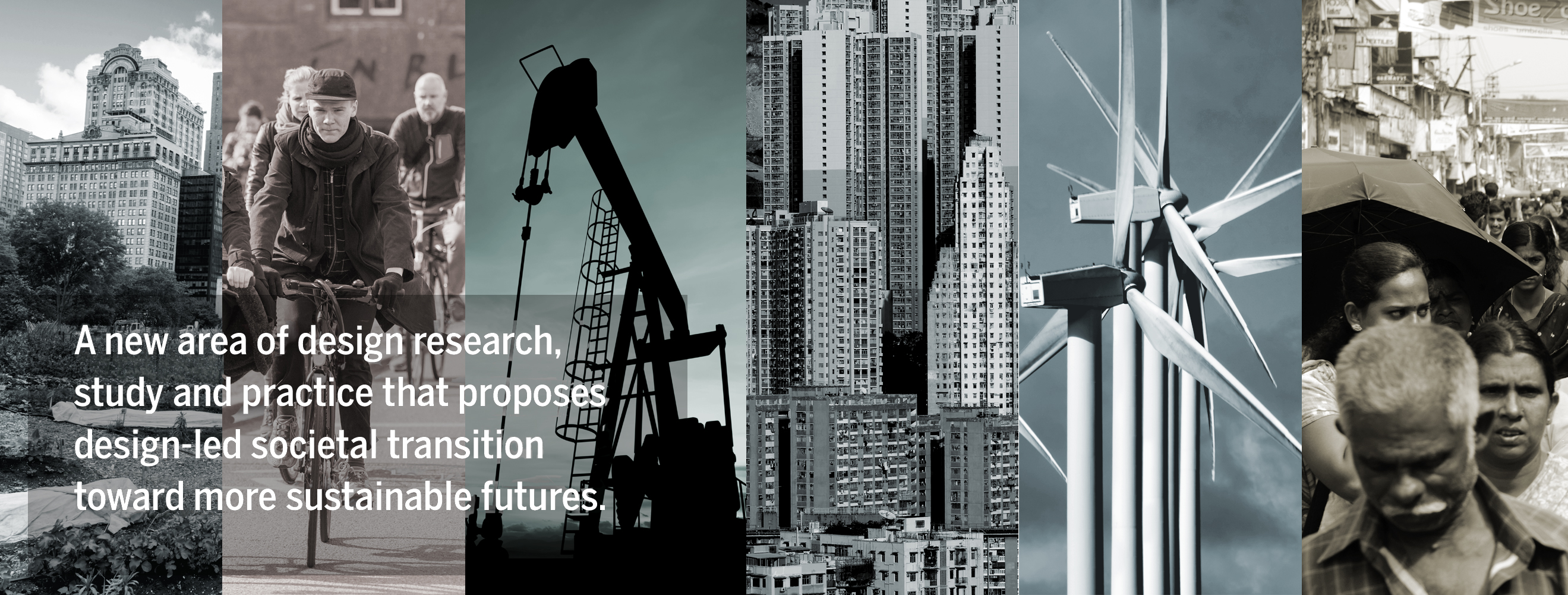Transition design as postindustrial interaction design

The School of Design at Carnegie Mellon University has started talking about ‘Transition Design.’
In his long reflection about this new kind of design practice, Cameron Tonkinwise, CMU’s Director of Design and Doctoral Studies, writes:
Transition refers to phased change – not revolution or sudden shifts, but a sustained process of multi-faceted transformation. To transition means not only having a sense of what you want to transition toward, but also what you are transitioning away from. It means having a capacity to function in current systems in ways that also begin to transform them. And it means being situationally aware of the changes as they take place, modifying means and ends in the light of what you learn as you proceed.
Transition Design signals an ambition for design to play a role in larger scale social change. Faculty at the School of Design have started to speak about Transition Design in terms of the imperatives for change: the need to develop societies that resource themselves in more sustainable and equitable ways. We are developing an argument about why and how design plays a crucial role in the systems-level changes needed to develop more sustainable ways of living and working.
He also provides this very insightful statement on the people-centred focus of Transition Design:
Interaction Design used to be ‘user-centered.’ The user was a uniform functional entity that you could pinpoint through user testing. Then there was the recognition that the subject of Interaction Design should be thought of more as a persona seeking experiences. But as the name indicates, ‘human-centered design’ still has a relatively stable lowest common denominator as its focus. The situation now is one in which those humans are not just culturally varied, but are themselves undergoing change; and moreover, those changes are the purpose of the Interaction Design. This demands that designers know a lot more about humans, their psychologies and sociologies, their material cultures and immaterial values. To navigate all this not only requires a lot more social research by designers, but also a different way of approaching people. A Transition Designer recognizes not only that their work touches on ethics and politics, but that there is no avoiding having a position on values and beliefs as a designer. To be able to understand different kinds of people in processes of change demands that you be very aware of your own worldviews and perspectives. Design Thinking glibly calls this empathy, as if it is easy to understand authentically the people you are designing with. A Transition Designer knows that they will be changed by the people their designs service.
More information about Transition Design can be found at TransitionDesign.net.



